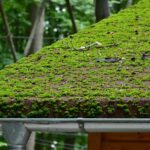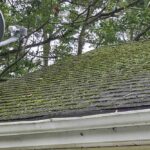Ensuring your roof drainage system complies with local codes is crucial for maintaining the integrity of your home and avoiding potential fines. Understanding the regulations and implementing the necessary measures can seem daunting, but with the right guidance, it becomes a manageable task. In this article, we will explore essential steps you need to follow to make sure your roof drainage is up to code and functioning optimally.

Understanding Local Building Codes
The first step in ensuring compliance is to thoroughly understand the local building codes related to roof drainage. These codes are designed to protect homeowners, the environment, and the community from water damage and other related issues. They often specify materials, dimensions, and installation practices.
Researching Your Area’s Requirements
Start by contacting your local building authority or visiting their website to gather specific information about the codes in your area. Each municipality may have different requirements, so its essential to understand what applies to you. You can also refer to resources like the detailed guides on selecting the right drainage systems to prevent water damage.
Common Drainage Requirements
Typically, the codes will address the slope of the roof, the size and type of gutters and downspouts, and their placement. Additionally, regulations may require specific materials that can withstand local weather conditions, ensuring longevity and performance.
Designing an Effective Roof Drainage System
Once you understand the local requirements, the next step is to design a roof drainage system that meets these codes while effectively managing water runoff.
Calculating Roof Slope and Water Flow
The slope of your roof is a critical factor in drainage efficiency. A properly sloped roof ensures water flows toward gutters rather than pooling. Use the roof area and average rainfall data to calculate the necessary capacity for your drainage system.
Selecting the Right Materials
The choice of materials for gutters and downspouts can impact both performance and compliance. Consider durable materials like aluminum or copper that meet code requirements and withstand local weather conditions.
For a more detailed explanation on managing water runoff, visit this resource.
Installation and Compliance Checks
Proper installation is critical to ensure compliance and functionality. Whether you’re doing it yourself or hiring professionals, following the right steps is crucial.
Hiring Qualified Professionals
For most homeowners, hiring a professional contractor is the best way to ensure proper installation and compliance. Professionals are familiar with the local codes and can perform the installation efficiently.
Post-Installation Inspections
After installation, its wise to conduct an inspection to confirm everything is up to code. This might involve checking the slope, the attachment of the gutters, and the positioning of downspouts.
Refer to inspection tips for more detailed guidance.
Maintenance and Ongoing Compliance
Maintaining your roof drainage system is an ongoing process that ensures continued compliance and functionality.
Regular Cleaning and Repairs
Regular maintenance, including cleaning gutters and checking for blockages, is crucial for preventing water damage and ensuring the system remains compliant. Address issues like leaks and blockages promptly to avoid bigger problems.
Find tips on removing blockages effectively.
Documenting Maintenance Activities
Keep records of all maintenance activities and inspections. This documentation can be invaluable if there are ever disputes about compliance or if you decide to sell your property.

FAQs
What are the consequences of non-compliance?
Non-compliance with local codes can lead to fines, increased risk of water damage, and problems when selling your home.
How often should roof drainage be inspected?
Its recommended to inspect your roof drainage system at least twice a year, and after major storms.
Can I modify my roof drainage system myself?
While minor maintenance can be done by homeowners, significant modifications should be handled by professionals to ensure compliance.
For more information on managing roof drainage in specific situations, such as flood zones, check out this article.
This article contains affiliate links. We may earn a commission at no extra cost to you.








